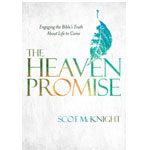We’ve been working through Denis O. Lamoureux’s book Evolutionary Creation: A Christian Approach to Evolution – a book that describes a way to move beyond the creation and evolutions debates. Chapter 5 of this book looks at The Bible and Science: Beyond Conflict and Concordism. Earlier this month we discussed the presence of ancient science within the text of scripture (EC 5 and EC 6). There is little doubt but that the text of scripture carries, incidental to the main theological message, an ancient understanding of cosmology, geology, and biology. But this ancient science is incidental to the message of scripture, it is not integral to the message of scripture. Nor does it impact reliability of scripture. In chapter 5 Dr. Lamoureaux reiterates these ideas and then discusses the implication for biblical interpretation
 The key point according to Dr. Lamoureux is to realize that the Bible is sufficient to convey the intended theological message and that humans are proficient to receive and comprehend this message. The ancient “science,” that is the ancient Near Eastern interpretation of the material world implicit within the text of scripture, is incidental to the message of scripture. This is true whether the text is interpreted literally, figuratively, or allegorically. According to Dr. Lamoureux:
The key point according to Dr. Lamoureux is to realize that the Bible is sufficient to convey the intended theological message and that humans are proficient to receive and comprehend this message. The ancient “science,” that is the ancient Near Eastern interpretation of the material world implicit within the text of scripture, is incidental to the message of scripture. This is true whether the text is interpreted literally, figuratively, or allegorically. According to Dr. Lamoureux:
However, the fact that the Bible features an ancient science is significant. It subtly indicates that scientific information about nature is not essential for a holy life. In particular ancient origins science in the creation accounts indirectly reveals how God made the world is not foundational to the doctrine of creation. Stated bluntly, understanding origins is ultimately irrelevant to one’s walk with the Lord. (p. 158)
The early church fathers, Augustine, the medieval scholastics, the reformers, young earth creationists, progressive creationists, and Christians holding to evolutionary creation, read the same spiritual and theological message in the creation narratives in scripture. The Christian walk is determined by a life commitment that is largely independent of the specific understanding of God’s method of creation.
Which features in scripture can be considered incidental and which features are essential and integral to the message?
To what extent does the message of scripture depend on the incidental features of the way the message is conveyed?
Dr. Lamoureux brings up two important points as he discusses the role of an ancient understanding of the material world in scripture. The first is that everyone has a view that places their surroundings in context. This is an unavoidable part of our very make-up.
Men and women live in a physical world and have no choice but to have some sort of understanding of nature. Psychological health demands that people know their surroundings. History reveals that knowledge of the universe and life has been an indispensable component of the religious and philosophical beliefs of every generation. (p. 163)
Implicit understanding of the world shapes both the original text of scripture and the interpretation of the text through the ages. There was no way to produce a text free from a view of the material world and there is no way to read the text without being influenced by an understanding of the material world. We all read into the text to make sense of the words in the context of what we know about the world – from our understanding of the rising and setting of the sun to our interpretation of the word “firmament.”
The second point is that the Holy Spirit did not correct mistaken notions about the nature of the material universe when giving insight and understanding about the relationship between God, creation, and mankind. Passages that contain reference to the nature of the material universe are best understood using the idea of accommodation and by considering carefully the literary genre of the text. Not only did the Holy Spirit accommodate to the phenomenological view of the world, the ancient understanding of the material universe, “the Holy Spirit also accommodated by using the literature-of-the-day” with literary forms and genres that were common to the original authors and audiences. Dr. Lamoureux summarizes:
In sum, the hermeneutical principles outlined in this section open the way to a relationship between the Bible and science that moves beyond conflict and concordism. Passages referring to nature neither clash with nor correspond to modern scientific knowledge because the Holy Spirit intentionally accommodated Scripture to the cognitive level of ancient peoples. An appreciation of biblical hermeneutics leads Christians to make informed interpretative decisions in order to draw out “pure spiritual milk” from its incidental ancient vessel (1 Pet 2:2). (p. 168-169)
An Incarnational Model. Dr. Lamoureux casts his understanding of the nature of scripture using an incarnational model. As God in Jesus became fully human to reach humans while remaining fully divine, so God in his revelation uses human forms, coming down to our level, while reliably providing theological and spiritual insight. He sees the similarities as three-fold: ontological, temporal, and pedagogical.
Ontological: Jesus became human in his being. He became hungry and tired, presumably he stubbed his toe, cut himself, and caught the stomach flu. He was limited by his human nature by taking on human form. So too, scripture is human and divine – using literary forms and the “street language” of ordinary people to convey the divine message.
Temporal: Jesus entered into history at a particular defined point in history – some of the things he said and did were determined by that context of time and place. The message and the import of his action in life, death, and resurrection, transcend time and place; the incidental details do not.
Like Jesus’ temporality, the Bible both transcends and is bound within history. Scripture offers timeless truths written in various ancient historical eras. The actual periods when the Holy Spirit inspired the sacred writers are incidental to the inerrant and infallible Message of Faith. In other words there is nothing inherently special about any specific point in the past. … Evidence for this fact is seen in the lives of men and women changed by the Gospel in every generation. (p. 171)
Pedagogical: The teaching style used by Jesus was designed to proclaim the coming kingdom of God in a comprehensible fashion. He used stories and images from everyday life. Likewise scripture uses images familiar to the audience through the ages – it does not embed “perfect” understanding of the material world in the text because this would have been – and would still be today – pedagogically inappropriate. Quantum physics, modern astronomy, and human genetics reveal the creative work of God as we learn and grow, standing on the shoulders of those who came before – but they are not necessary to understand the the creative power of God or his relationship with his creation.
Dr. Lamoureux summarizes the view presented in this chapter as shown in the diagram below:
What do you think?
Should we expect concordance between our modern scientific understanding of the material world and the view implicit in scripture?
Does the incarnational model lend insight to the nature of scripture as the inspired Word of God?
It you wish to contact me directly you may do so at rjs4mail[at]att.net
If interested you can subscribe to a full text feed of my posts at Musings on Science and Theology.
For those who find the full book (400+ pages) somewhat daunting Dr. Lamoureux has condensed the book into a more accessible version, I Love Jesus & I Accept Evolution. He also provides audio and slide summaries of each chapter of Evolutionary Creation online.












